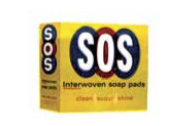
Why Diversity Matters
A lesson for the "Mad Men" crowd.
WE WERE KOSHER-STYLE JEWS. Never pork (except in Chinese restaurants); we always walked to services on the holidays (but we didn’t go to Shabbat services); we changed plates for Pesach (but not silverware or pots), and of course we never had SOS in the house—only Brillo. My mother had grown up in a relatively observant household in Malden, Massachusetts. She had gone to Hebrew Teacher’s College in Brookline when she was in high school in the 1930’s and she was the Hebrew teacher in Danbury, Connecticut, where we lived. My father was a New Yorker who came from a family strongly engaged in the Workman’s Circle, which emphasized social justice and Yiddishkeit. Both families were Labor Zionists.
In the summer of 1962, when I was 19 years old, I landed a job as an intern in the market research division of General Foods, White Plains, NY. I had just finished my junior year at Radcliffe (in those days, women were accepted by Radcliffe, lived at Radcliffe, graduated with our Radcliffe classmates, but took our courses with the Harvard guys), where I wore my regular college costume: white Keds, black tights, a miniskirt, a Villager blouse, and a green canvas bookbag. That year, I realized that I wanted to be a statistician, and working in market research would give me the opportunity to know what statistics could do. My job was to pore over sheets of data to learn what General Foods products sold where, and to whom. (For the job, my mother made sure I dressed appropriately—black Capezio flats, sheer stockings, a pleated knee-length skirt, a blouse with a Peter Pan collar, and no bookbag)
My boss was extremely supportive, regularly encouraging me to meet the senior staff of the department. One day, he invited me to attend a meeting with a tableful of serious, influential people at GF.
The problem these executives were trying to solve: “Why can’t we sell SOS dish-soap pads in Jewish areas of the country?”
The bigwigs knew that SOS outsold its major competitor, Brillo, all over the country, except in Jewish areas. They knew that the higher the concentration of Jews in an area, the lower the market share SOS had. Forget Crown Heights, the Lower East Side, and Dorchester in Boston. That was the beauty of market research—it allowed one to identify demographic predictors of product acceptability. So they tried all sorts of expensive, elaborate strategies—ads in newspapers, ads on the Molly Goldberg TV show,—and the needle didn’t budge. The stubborn Jews wouldn’t switch from Brillo.
I was the only female in the room, and much, much younger than everyone else. All the others were middle-aged male WASPs. As I remember them, they were all extremely tall, perfectly dressed, and immaculately coiffed. They spoke with the conviction that comes with power. But I was totally puzzled, and rather amused, by their ignorance. Normally, I would have felt nervous saying anything in the presence of such a group, but this time the answer was so clear to me that I announced to the men around that board table: “The soap in SOS is not kosher; Brillo’s is. So no amount of advertising is going to sell SOS in Jewish areas.”
Stunned silence.
“There is such a thing as kosher soap?” one of the men asked, incredulous.
SEVERAL YEARS LATER, when I was a graduate student and was invited to lunch at the home of Harvard’s renowned scholar of immigration history, Oscar Handlin, I told this story. Handlin paused, then muttered, “Serves them right for not hiring Jews.”




